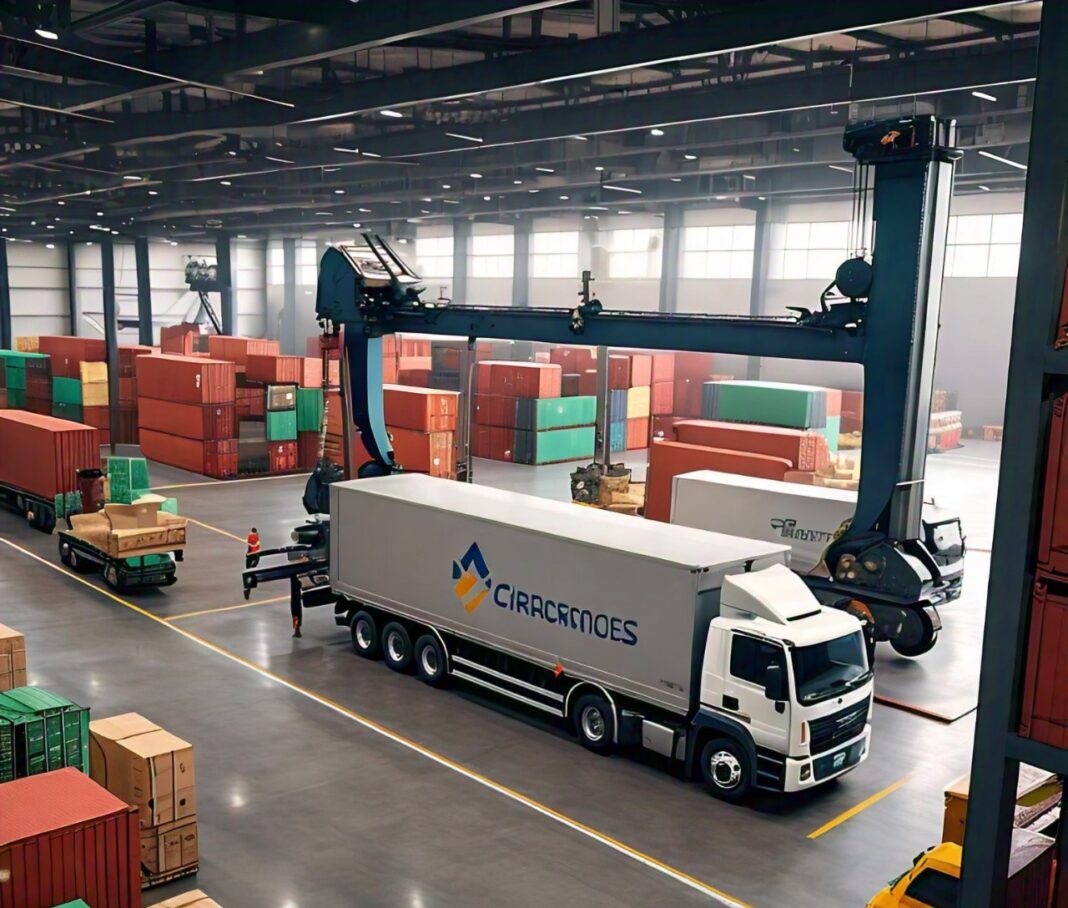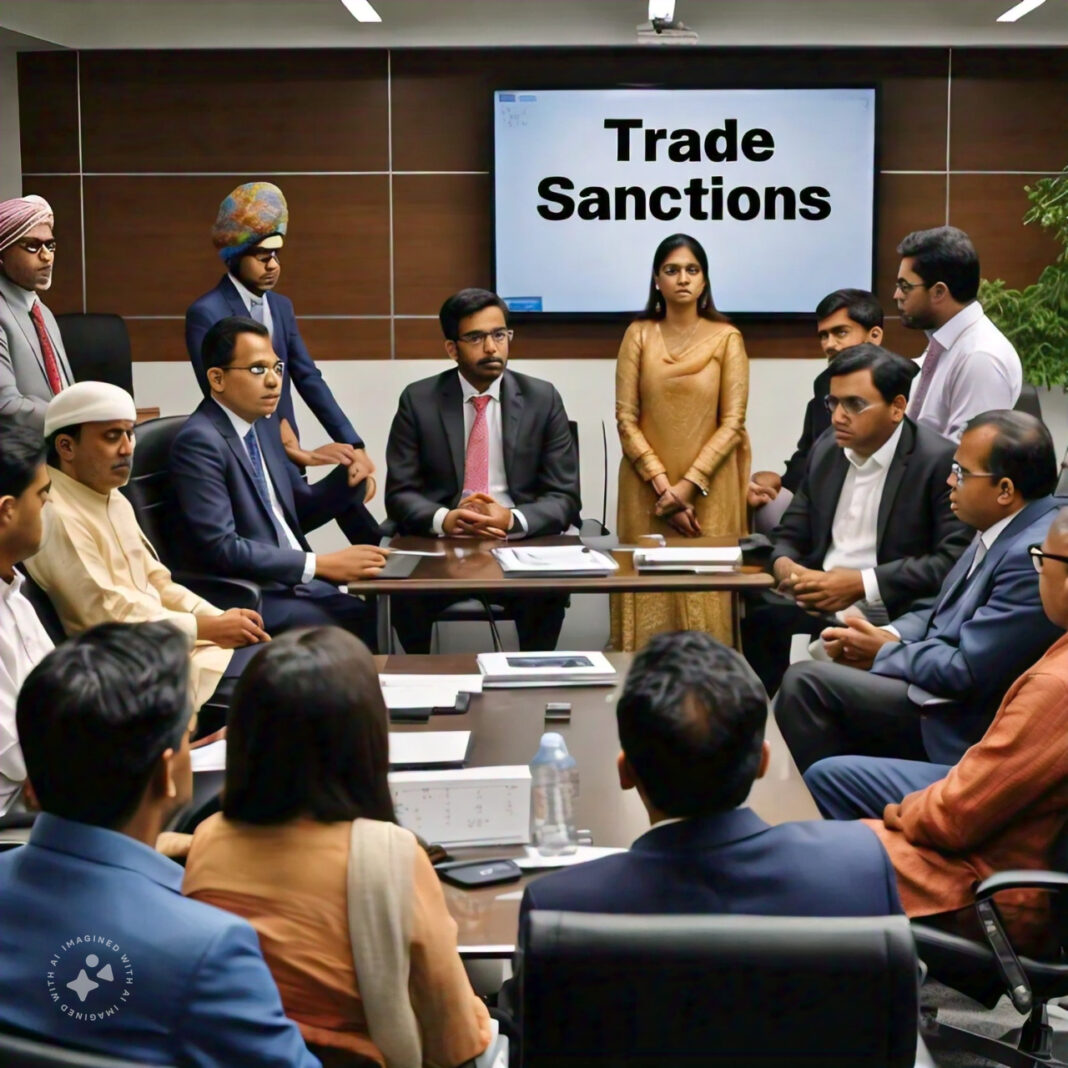In the complex world of international trade, understanding the intricacies of trade logistics is crucial for importers and exporters. Trade logistics encompasses the planning, implementation, and control of the movement of goods across borders, and its effectiveness can significantly impact the efficiency and profitability of global operations. However, navigating this landscape requires more than just logistical acumen; it demands a thorough understanding of the regulations, compliance requirements, tariffs, and trade agreements that govern cross-border trade.
As businesses expand their reach into new markets, they encounter a web of legal and regulatory frameworks that can vary widely from one country to another. These frameworks include import and export regulations, which dictate how goods should be documented, classified, and processed to ensure smooth customs clearance. Additionally, tariffs and duties play a pivotal role in determining the cost-effectiveness of trade, influencing decisions on pricing, sourcing, and market entry strategies.
Trade agreements further complicate this environment, as they establish the rules of trade between countries or regions, often affecting tariffs and regulatory requirements. These agreements can provide opportunities for reduced trade barriers but also require a keen understanding of their specific provisions to fully leverage their benefits.
This article aims to provide a comprehensive guide for importers and exporters seeking to navigate these complexities. By exploring the key aspects of trade regulations, compliance, tariffs, and trade agreements, we will offer valuable insights and practical advice to help businesses optimize their logistics operations and stay compliant with global trade requirements. Whether you are new to international trade or looking to enhance your existing processes, understanding these elements is essential for achieving success in the global marketplace.
Key Regulatory Bodies and Their Roles
In the realm of international trade logistics, several key regulatory bodies play crucial roles in overseeing and managing the complex framework of trade regulations and compliance. Understanding these organizations and their functions is essential for importers and exporters to navigate the regulatory landscape effectively.
World Trade Organization (WTO)
The World Trade Organization is a global entity that sets the rules for international trade between nations. It aims to ensure that trade flows as smoothly, predictably, and freely as possible. The WTO oversees trade agreements, resolves disputes, and monitors national trade policies. Its agreements, such as the General Agreement on Tariffs and Trade (GATT) and the Trade Facilitation Agreement (TFA), are fundamental in shaping global trade practices.
International Chamber of Commerce (ICC)
The International Chamber of Commerce is a global business organization that promotes international trade and investment. It provides a range of tools and guidelines to facilitate trade, including the ICC Incoterms® rules, which define the responsibilities of buyers and sellers in international transactions. The ICC also works on issues related to trade finance, customs procedures, and dispute resolution.
National Customs Authorities
U.S. Customs and Border Protection (CBP)
In the United States, Customs and Border Protection is the federal agency responsible for regulating and facilitating international trade and enforcing U.S. trade laws. CBP manages the import and export of goods, ensures compliance with customs regulations, and addresses issues such as tariffs, trade agreements, and border security.
European Customs Authorities
In Europe, customs authorities operate at the national level but follow the regulations set by the European Union. Each member state has its customs authority, such as Her Majesty’s Revenue and Customs (HMRC) in the UK or the French Customs Authority (Douanes). These agencies enforce EU-wide trade regulations and manage customs processes within their jurisdictions.
Trade Compliance Agencies
Office of Foreign Assets Control (OFAC)
The Office of Foreign Assets Control, part of the U.S. Department of the Treasury, administers and enforces economic and trade sanctions based on U.S. foreign policy and national security goals. OFAC’s regulations impact how U.S. businesses engage in trade with certain countries, entities, and individuals.
Also Read: The Impact of Trade Deficits on National Economies

Export Control Authorities
Different countries have export control authorities that regulate the export of goods, services, and technology. For instance, the Bureau of Industry and Security (BIS) in the U.S. manages export controls related to national security and foreign policy, while the Export Control Organization (ECO) in the UK oversees similar functions.
Understanding Import and Export Regulations
Navigating the complex web of import and export regulations is essential for businesses engaged in international trade. These regulations dictate how goods are to be documented, classified, and processed to ensure compliance with legal requirements and facilitate smooth customs clearance. This section delves into the core aspects of import and export regulations to help importers and exporters understand and manage their obligations effectively.
Overview of Import Regulations
Required Documentation
To import goods, businesses must provide specific documentation to customs authorities. Key documents include:
- Commercial Invoice: This document details the transaction between the buyer and seller, including product descriptions, quantities, and prices.
- Bill of Lading: Issued by the carrier, this document serves as proof of shipment and provides details on the cargo’s journey.
- Certificate of Origin: This certifies the country in which the goods were produced or manufactured and may be required to determine applicable tariffs and trade agreements.
- Import Permit or License: Some goods require an import permit or license, depending on their nature and the regulations of the importing country.
Import Permits and Licenses
Certain products may be subject to import restrictions and require specific permits or licenses. These can vary by country and product type. Importers must ensure they obtain the necessary approvals to comply with local regulations and avoid potential delays or penalties.
Overview of Export Regulations
Export Controls and Restrictions
Export regulations govern the movement of goods out of a country and often involve restrictions on certain items. These controls may be based on:
- National Security: Some goods, especially those with dual-use potential (civilian and military), may require export licenses to ensure they are not used in ways that could threaten national security.
- Foreign Policy: Exports may be restricted to certain countries or entities due to international sanctions or trade embargoes.
- End-Use and End-User: Exporters must verify the end-use and end-user of their products to ensure compliance with export controls and prevent misuse.
Documentation and Licenses
Exporters need to provide various documents and licenses to comply with regulations. Key documents include:
- Export License: Issued by the relevant authority, this license authorizes the export of specific goods to certain destinations.
- Export Declaration: A detailed statement of the goods being exported, often submitted electronically to customs authorities.
- Packing List: Provides details on the contents and packaging of the shipment, helping customs officials verify the contents.
Key Considerations for Importers and Exporters
Classification and Valuation
Correctly classifying goods under the Harmonized System (HS) codes and determining their value is crucial for accurate tariff assessment and compliance. Misclassification or incorrect valuation can lead to penalties and delays.
Customs Compliance
Maintaining accurate and complete records of import and export transactions is essential for customs compliance. Regular audits and reviews can help ensure adherence to regulations and identify areas for improvement.
Staying Informed
Regulations and requirements can change frequently, so staying informed about updates in trade laws, tariffs, and compliance requirements is vital. This can be achieved through industry news, government updates, and consultations with trade compliance experts.
Tariffs and Duties
Tariffs and duties are significant factors in international trade logistics, affecting the cost and efficiency of cross-border transactions. Understanding how these costs are calculated and managed is crucial for importers and exporters to optimize their trade operations and maintain competitive pricing. This section explores the various types of tariffs, how they are assessed, and strategies for managing them effectively.
What Are Tariffs and Duties?
Definition
- Tariffs: Tariffs are taxes imposed by governments on imported goods. They are designed to protect domestic industries from foreign competition by increasing the cost of imported products. Tariffs can also be used as a tool in trade negotiations and economic policy.
- Duties: Duties are similar to tariffs but can refer to various taxes or charges on imports or exports, including customs duties, excise duties, and anti-dumping duties. Duties are applied based on the nature and value of the goods.
How Tariffs Are Calculated
Ad Valorem Tariffs
Ad valorem tariffs are calculated as a percentage of the value of the imported goods. For example, if the tariff rate is 10% and the value of the goods is $1,000, the tariff would amount to $100.
Specific Tariffs
Specific tariffs are fixed amounts charged per unit of the imported goods, such as a specific dollar amount per kilogram or per item. For instance, a tariff might be $5 per kilogram of a product.
Compound Tariffs
Compound tariffs combine both ad valorem and specific tariffs. For example, a tariff might be calculated as a percentage of the value of the goods plus a fixed amount per unit.
Further Read: Why Emerging Markets Are the Next Frontier in International Trade

Types of Tariffs
Import Tariffs
Import tariffs are levied on goods brought into a country. They can vary based on product category, country of origin, and trade agreements. Import tariffs are designed to protect domestic industries and regulate trade flows.
Export Tariffs
Export tariffs are less common but are imposed on goods leaving a country. They can be used to control the export of certain goods or to ensure that sufficient supplies remain available domestically.
Anti-Dumping Duties
Anti-dumping duties are imposed on imports sold below market value or below the cost of production. These duties are intended to prevent unfair competition and protect domestic industries from predatory pricing practices.
Impact of Tariffs on Trade Logistics
Cost Implications
Tariffs increase the cost of importing goods, which can affect pricing strategies and profit margins. Importers need to account for these costs in their pricing models to remain competitive in the market.
Supply Chain Decisions
High tariffs may influence supply chain decisions, such as sourcing products from different countries or adjusting production locations. Companies may seek to optimize their supply chains to minimize tariff impacts.
Trade Agreements and Tariff Reduction
Trade agreements can reduce or eliminate tariffs between participating countries. By leveraging trade agreements, businesses can benefit from lower tariffs and improved market access. Understanding the provisions of these agreements is essential for maximizing their advantages.
Trade Agreements and Their Impact
Trade agreements are pivotal in shaping international trade by establishing the rules and conditions under which countries trade with each other. These agreements can significantly influence tariffs, trade regulations, and market access. For importers and exporters, understanding these agreements is crucial for optimizing trade operations and leveraging potential benefits. This section explores the major types of trade agreements, their impact on tariffs and regulations, and examples of key agreements.
Definition and Purpose of Trade Agreements
Trade agreements are treaties between two or more countries that outline the terms of trade between them. They aim to reduce trade barriers, such as tariffs and quotas, and enhance economic cooperation. The primary goals of trade agreements include:
- Reducing Trade Barriers: Lowering or eliminating tariffs and quotas to facilitate easier and more cost-effective trade.
- Promoting Fair Competition: Ensuring that trade practices are fair and transparent, and addressing issues such as subsidies and dumping.
- Enhancing Economic Cooperation: Fostering closer economic ties and collaboration between member countries to boost economic growth.
Major Types of Trade Agreements
Free Trade Agreements (FTAs)
Free Trade Agreements are designed to reduce or eliminate barriers to trade between member countries. They focus on lowering tariffs, improving market access, and promoting economic integration. FTAs typically cover a wide range of areas, including goods, services, and investment.
- Example: The United States-Mexico-Canada Agreement (USMCA) is an FTA that replaced NAFTA and aims to enhance trade relations between the three countries by updating and expanding trade provisions.
Bilateral Agreements
Bilateral agreements involve trade deals between two countries. These agreements address trade barriers and market access issues specific to the bilateral relationship.
- Example: The U.S.-Japan Trade Agreement focuses on reducing tariffs on agricultural and industrial products between the two countries, enhancing trade and economic cooperation.
Also Read: How Trade Sanctions Are Affecting Global Markets

Customs Unions
Customs unions involve member countries agreeing to adopt a common external tariff on imports from non-member countries while allowing free trade among themselves. This arrangement simplifies trade within the union and ensures uniform trade policies.
Compliance with Trade Regulations
Ensuring compliance with trade regulations is vital for importers and exporters to avoid legal issues, fines, and disruptions in their operations. Compliance involves adhering to various laws and standards related to trade, customs, and documentation. This section outlines the importance of compliance, common challenges, and best practices for maintaining adherence to trade regulations.
Importance of Compliance in Trade Logistics
Avoiding Legal Issues
Non-compliance with trade regulations can lead to significant legal consequences, including fines, penalties, and legal disputes. Adhering to regulations helps businesses avoid these risks and ensures that their trade activities are conducted within the bounds of the law.
Ensuring Smooth Operations
Compliance with trade regulations facilitates smoother customs clearance and avoids delays in the movement of goods. By following the required procedures and providing accurate documentation, businesses can ensure that their shipments are processed efficiently and without interruption.
Building Trust and Reputation
Demonstrating compliance with trade regulations builds trust with customers, suppliers, and regulatory authorities. It enhances a company’s reputation as a responsible and reliable business partner, which can positively impact relationships and opportunities in the global market.
Navigating Customs Procedures
Navigating customs procedures is a critical component of international trade logistics. Properly managing customs processes ensures that goods are imported and exported smoothly, minimizing delays and avoiding potential issues. This section outlines the key steps involved in customs procedures, common issues faced, and best practices for efficient customs management.
Overview of Customs Procedures
Steps Involved in Customs Clearance
- Import Declaration: Submit an import declaration to customs authorities, detailing the goods being imported, their value, and their classification. This declaration often includes documents such as the commercial invoice, bill of lading, and certificate of origin.
- Customs Inspection: Customs authorities may conduct inspections to verify the accuracy of the import declaration and ensure compliance with regulations. This can involve physical inspections of the goods or review of the documentation.
- Payment of Duties and Taxes: Pay any applicable customs duties, tariffs, and taxes based on the classification and value of the goods. The amount due is calculated according to the relevant tariff codes and regulations.
- Release of Goods: Once all requirements are met and duties are paid, customs authorities will release the goods for delivery. Proper clearance ensures that the goods can proceed to their final destination without further delays.
Documentation Required
- Commercial Invoice: Details the transaction between the buyer and seller, including product descriptions, quantities, and prices.
- Bill of Lading: Serves as proof of shipment and provides details on the cargo’s journey.
- Certificate of Origin: Certifies the country where the goods were produced, which may affect tariff rates and trade agreements.
- Packing List: Provides information about the contents and packaging of the shipment, aiding in verification during customs inspections.
Common Customs Issues and How to Resolve Them
Delays in Customs Clearance
Delays can occur due to incomplete or inaccurate documentation, misclassification of goods, or customs inspections. To minimize delays, ensure that all required documents are complete and accurate, and comply with the correct tariff classifications.
Incorrect Tariff Classification
Misclassification of goods can lead to incorrect tariff assessments and potential penalties. Use the correct Harmonized System (HS) codes and seek guidance from customs experts if unsure about classifications.
Customs Compliance Issues
Non-compliance with customs regulations can result in fines, penalties, or seizure of goods. Regularly review and stay updated with customs regulations to ensure adherence and avoid compliance issues.
How Global Trade Policies Influence Trade Logistics
Effect on Tariffs and Duties
Global trade policies can lead to changes in tariffs and duties, influencing the cost of importing and exporting goods. Policy shifts may result in increased tariffs or new trade barriers, impacting pricing and cost structures. Conversely, favorable trade policies or agreements can reduce tariffs and facilitate more cost-effective trade.
Impact on Trade Agreements
Trade policies can affect existing trade agreements or lead to the formation of new ones. Changes in trade agreements can modify the terms of trade, including tariff rates, market access, and regulatory requirements. Businesses must adapt to these changes to leverage new opportunities and ensure compliance.
Regulatory Changes
Global trade policies can drive regulatory changes that impact how businesses manage their trade operations. This may include new compliance requirements, updated standards, or changes in documentation procedures. Staying informed about these changes is essential for maintaining regulatory compliance.
Also Read: Trade Wars: The Future and What Lies Ahead
Conclusion
Navigating the complexities of trade logistics is essential for businesses involved in international trade. From understanding the impact of global trade agreements and complying with regulations to optimizing supply chains and staying ahead of emerging trends, effective management of trade logistics can significantly influence a company’s success in the global market.
As the world of trade continues to evolve, driven by technological advancements, sustainability initiatives, and changing geopolitical landscapes, businesses must remain agile and informed. Embracing innovation, staying compliant, and optimizing logistics processes are not just strategies for efficiency but are crucial for maintaining competitiveness and ensuring long-term growth in the ever-changing global trade environment.
By focusing on these key aspects, importers and exporters can navigate the challenges of trade logistics, capitalize on new opportunities, and build a resilient and sustainable future in international trade.






